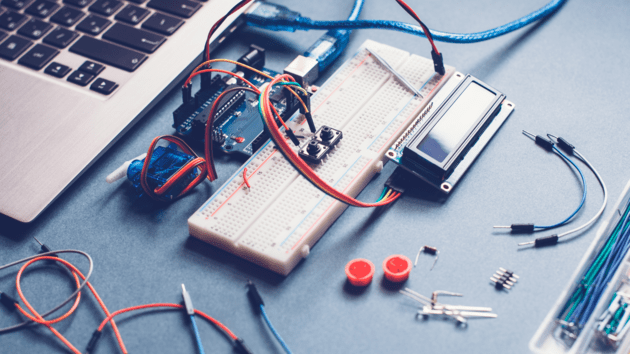Presently, the advantages of the growth of the electronics sector are experienced by the whole society. The field of electronic engineering plays a key role in meeting the three most important human needs (food, clothing, and shelter).The most important visible sector is the modern communication technology, which is growing rapidly. Yangon Technological University was established in 1958 as the Department of Electrical Engineering. In 1997, the Department of Electrical Engineering was reorganized into two departments, the Department of Electronic Engineering and Information Technology and the Department of Electrical Power Engineering. The undergraduate degrees, master of engineering and PhD were produced from the undergraduate and advanced degree programs in knowledge technology , mechanical engineering and electronic engineering at the Department of Electronic Engineering and Information Technology until 2003. In 2003, the Department of Electronic Engineering of Yangon Technological University became one of the 11 major departments, consisting of excellent teaching and research activities. The Department of Electronic Engineering in Yangon Technological University is working hard for the Republic of the Union of Myanmar to emerge as a modern and developed nation from the field of electronic engineering development. The five major electronics sectors are:
These five major areas of engineering research are not only excellent at teaching but also producing excellent undergraduate and postgraduate students .The teachers from the Department of Electronic Engineering publish research books, research journal articles and read the articles at the International Reading Festival every year.
Bachelor of Engineering Electronics (6 years), Master of Engineering Electronics (2 years) and Doctor of Philosophy Electronics (3 years) courses will be offered at the Department of Electronic Engineering in Yangon Technological University.
In the field of electronic engineering, modern curricula are developed with five main sections. Postgraduate courses, teaching and research activities are continuously being offered. These are:
The curriculum and content of the Bachelor of Engineering Electronics undergraduate course are designed and carefully prepared for each school year to meet the credit requirements. The first year course is the same for all participants. From the second year to the fifth year, we will teach the main subjects related to Electronics. Last year 2 months Internship and 6 months Graduation Thesis will be done and if successful, a degree will be awarded.
The average number of students accepted for undergraduate and advanced degree programs in undergraduate six-year courses of Electronics Engineering is 40. For a two-year master's degree in electronic engineering is 35 and for a three-year doctoral degree in electronics engineering is 15.
The main goal is to become an advanced research center through research and innovation.


Prior to 2012, the Department carried out research activities in four areas: Control, Communication, Circuit, and Computer. Since the launch of the Enhancement of Engineering Higher Education (EEHE) Project by the Japan International Cooperation Agency (JICA) in 2012, education reforms have been systematically organized and research groups have been set up. The research teams including Semiconductor Electronics Research Group, Control Engineering Research Group, Communication Engineering Research Group, Signal Processing Engineering Research Group, Microprocessors (Microprocessor and Microcontroller Applied Research Group) were established to carry out research. In 2015, Three Year Department Development Plan for the Development of the Department of Electronic Engineering is carried out. The main focus of the program is on the efforts of the Semiconductor Research Group in Myanmar to enable the production of semiconductors locally and to bring research results to international standards in a short period of time and collaborate on research with international universities. Currently research is being carried out in collaboration with Chiba University, Kanazawa University, Okayama University and Kumamoto University in Japan.

